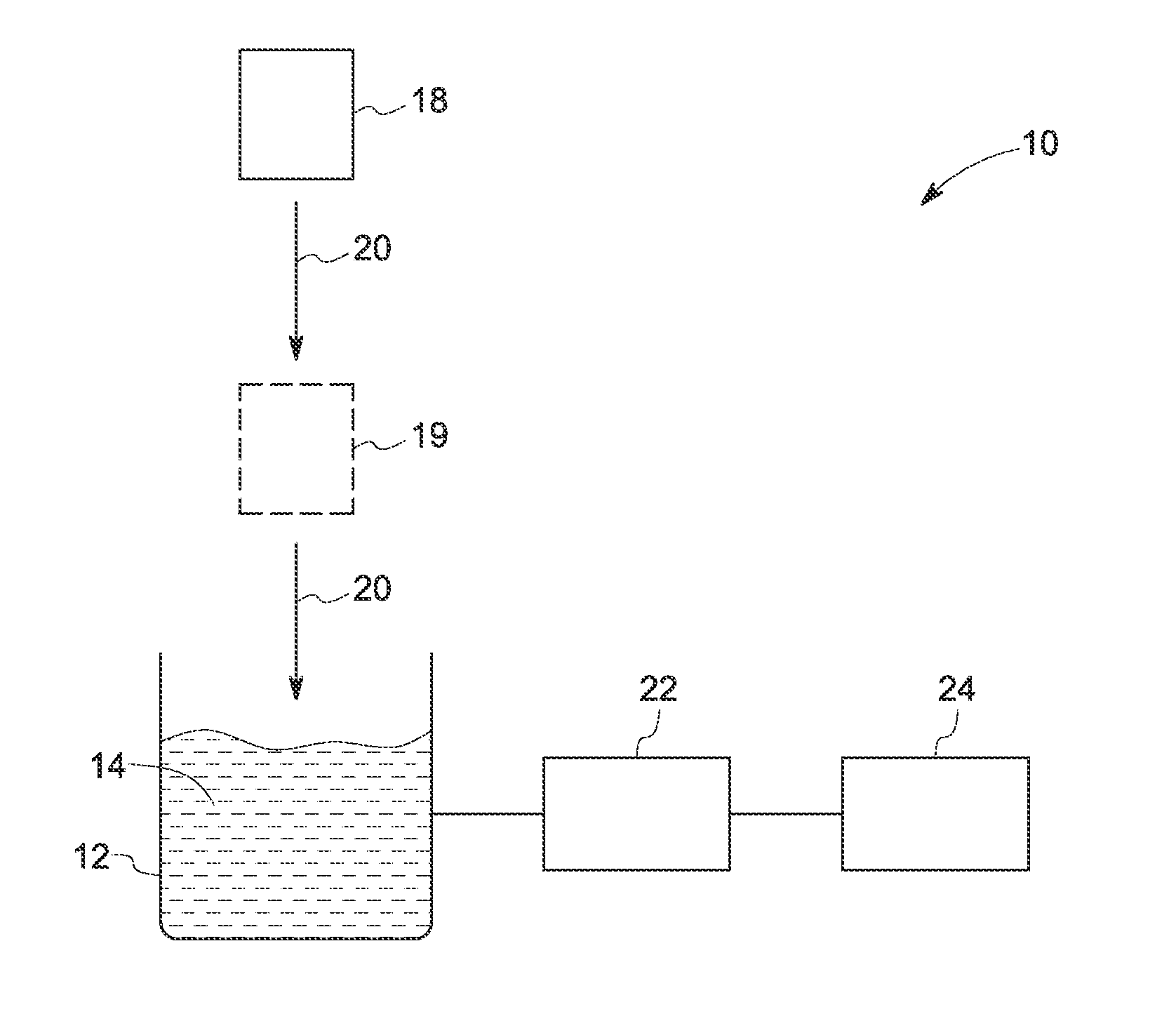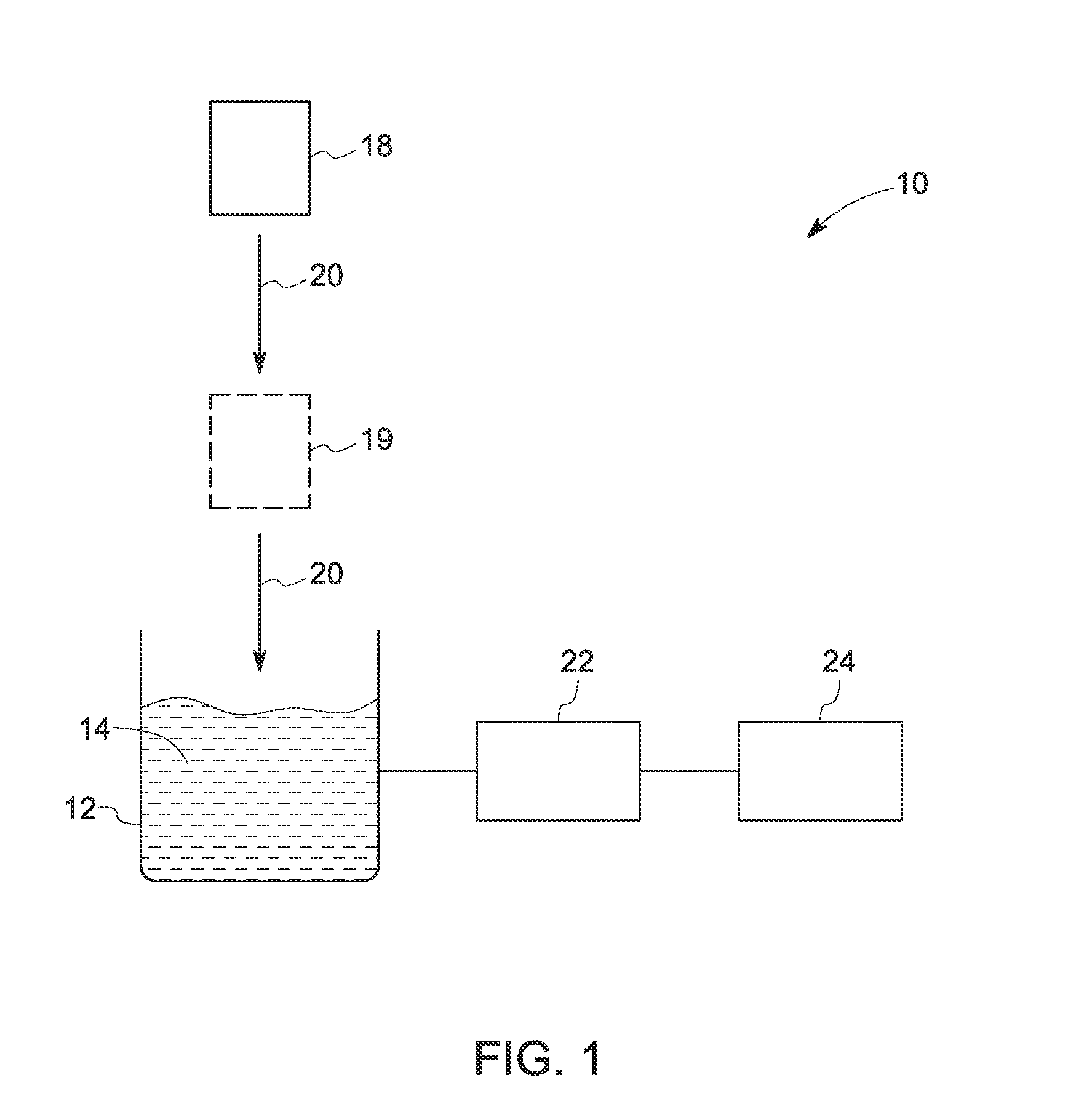Method and device for dissolved gas analysis
a technology of dissolved gas and analysis method, which is applied in the direction of optical radiation measurement, instruments, and sensing radiation from gases/flames, etc., can solve the problems of personnel injury, expensive equipment replacement, and high cost of failure,
- Summary
- Abstract
- Description
- Claims
- Application Information
AI Technical Summary
Benefits of technology
Problems solved by technology
Method used
Image
Examples
example 1
[0058]The following example demonstrates a change in temperature of a fluid on absorption of radiation of a wavelength.
[0059]Two samples, a water sample and a transformer oil sample were taken in small amounts (about 300 microliters) in individual containers. Both samples did not contain any gas. The samples were irradiated individually with radiation of wavelengths about 1942 nm and about 1947 nm, respectively, by using a quantum cascade laser (QCL). Each sample was measured for a change in temperature through a resistive temperature sensor (Pt100). FIGS. 4 and 5 are graphs showing the changes in temperatures of the water sample and the oil sample as a function of time during a period until the temperature of the samples reached a steady state temperature. The change in temperature (ΔTss) was measure about 170 millikelvin for the water sample, and about 1.2 millikelvin for the oil sample. The change in temperature for each of the samples confirms measurable absorption of the radiat...
example 2
[0061]The following example demonstrates initial calculations to estimate approximate temperature rise for a gas dissolved in the dielectric oil.
[0062]3 samples of transformer oil were considered for these calculations. Table 1 shows 3 samples, each containing a dissolved gas, the amount of the gas present in the sample, and the wavelength used to irradiate the sample. A fluid container as shown in FIG. 2A, made of quartz, having volume space length of 5 millimeters and diameter of 3 millimeters was considered to be filled with a sample. For calculations, the wall thicknesses of the container were not considered, and heat losses from the container were lumped into a thermal resistance of about 700 k / W. The expected temperature change for different gases and for different gas concentrations were calculated per formula (ii) given above, and are shown in the graphs of FIGS. 6, 7, and 8.
TABLE 1SampleGas dissolvedWavelength (cm−1)Sample 1CO23300Sample 2C2H22127Sample 3CO2314
PUM
 Login to View More
Login to View More Abstract
Description
Claims
Application Information
 Login to View More
Login to View More - R&D
- Intellectual Property
- Life Sciences
- Materials
- Tech Scout
- Unparalleled Data Quality
- Higher Quality Content
- 60% Fewer Hallucinations
Browse by: Latest US Patents, China's latest patents, Technical Efficacy Thesaurus, Application Domain, Technology Topic, Popular Technical Reports.
© 2025 PatSnap. All rights reserved.Legal|Privacy policy|Modern Slavery Act Transparency Statement|Sitemap|About US| Contact US: help@patsnap.com



